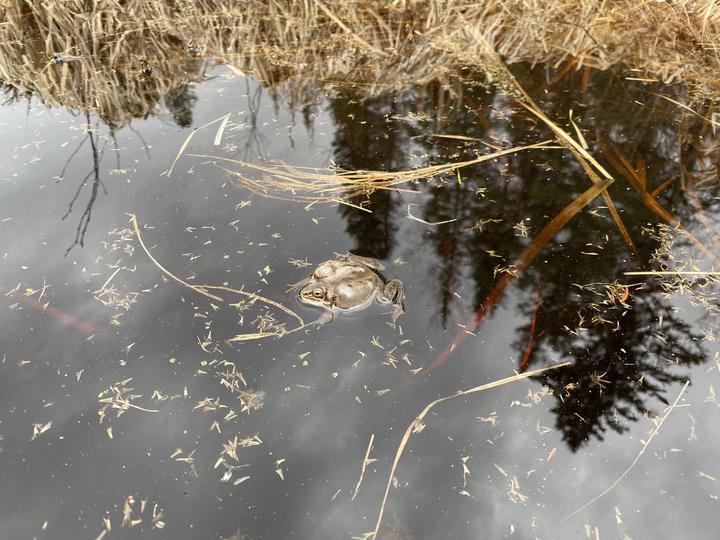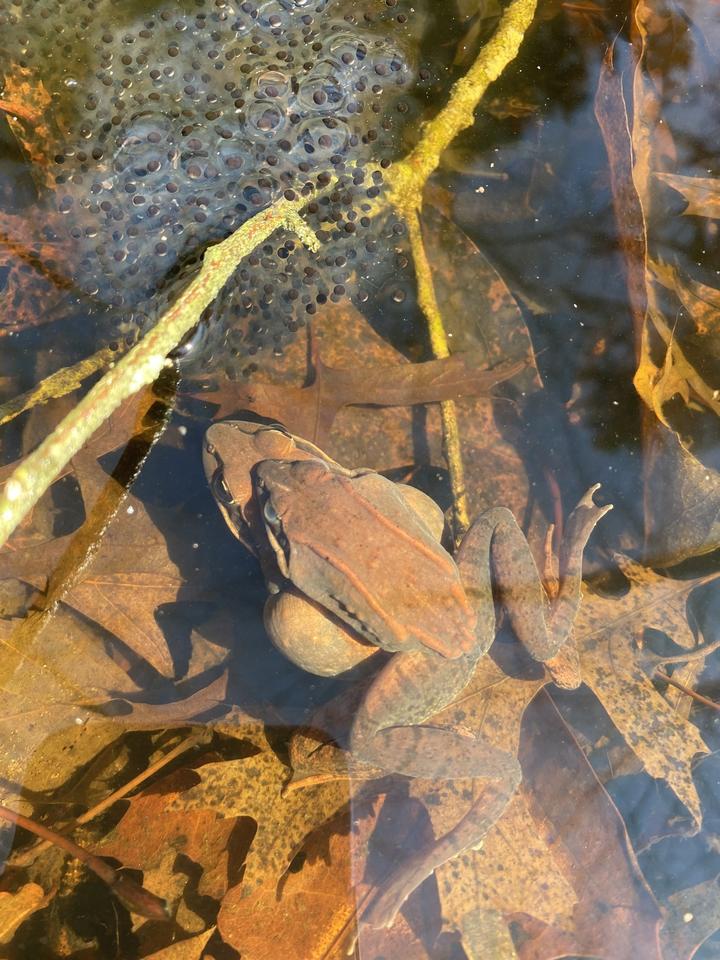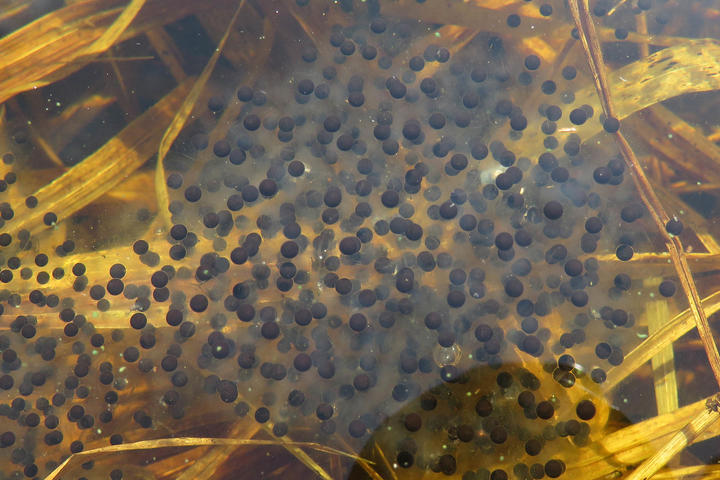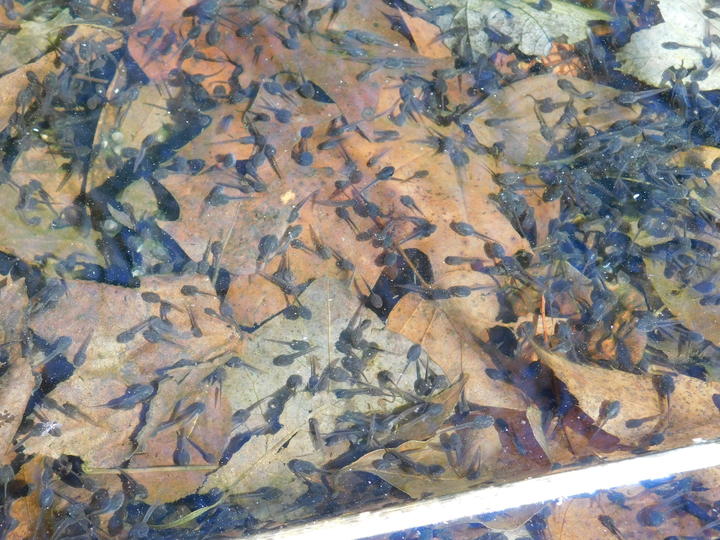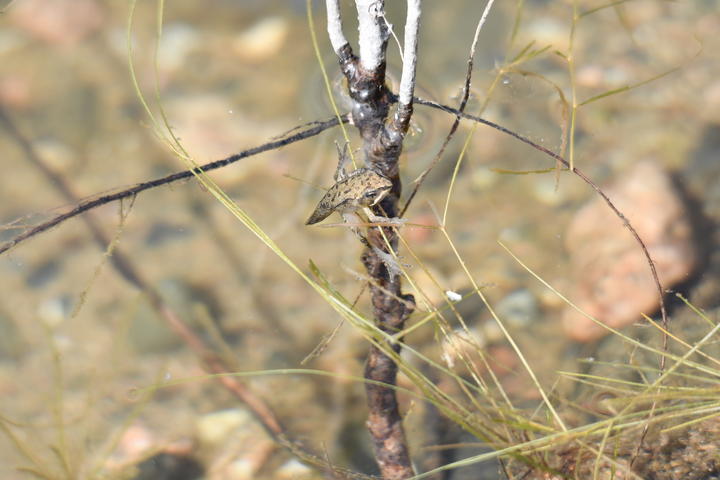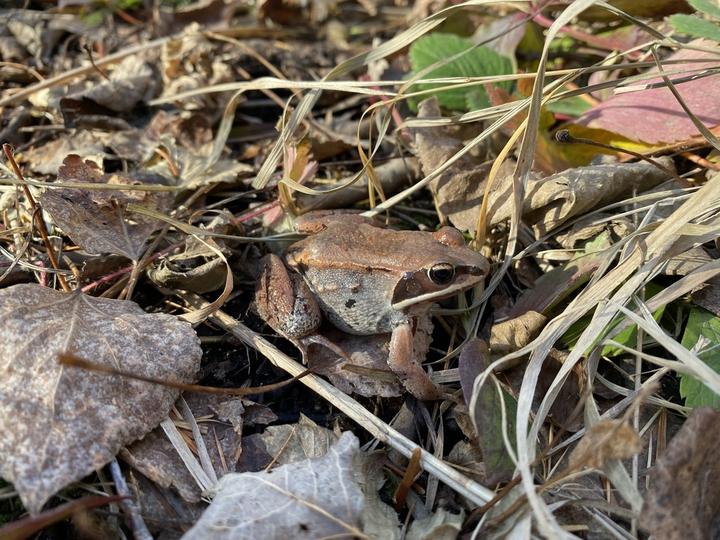More names for this animal
Anishinaabemowin: Omakakii (frog)
Dakota: Hnaṡka (frog)
The Dakota and Anishinaabe were among the earliest people to name Minnesota’s plants and animals, as well as to understand them in relation to Minnesota’s climate and seasons. Those original names are still in use, and several are included on the Season Watch website.
Latin (or scientific name): Rana sylvatica (alternative name: Lithobates sylvaticus)
The scientific community has a convention of assigning agreed-upon Latin names to every kind of organism. Using scientific names helps people communicate confidently about the same organism and organize lifeforms based on how closely related they are.
French: Grenouille des bois
Page contents
About the wood frog
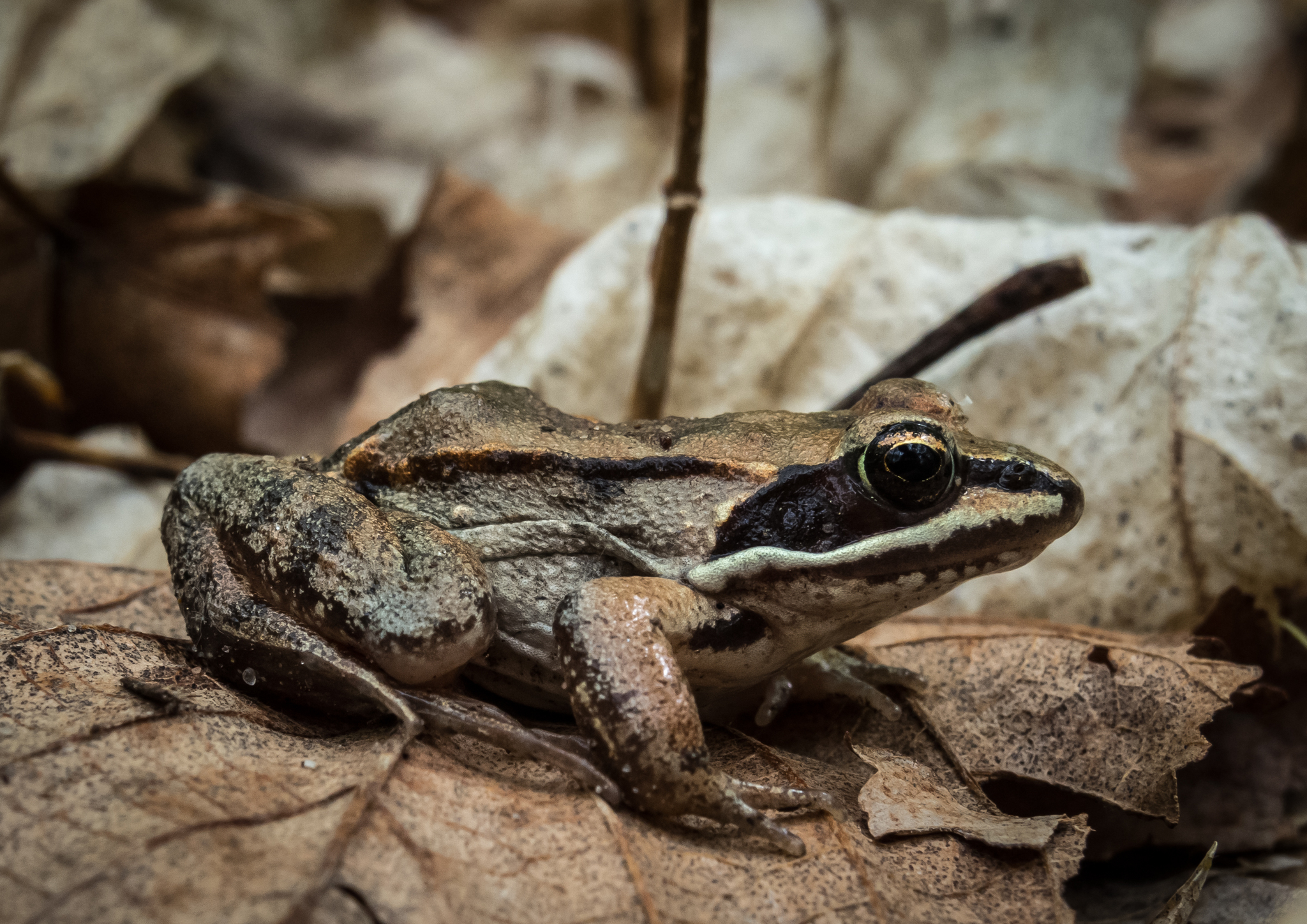
May 16, 2015, Itasca County, Minnesota
Photo © Janet Nelson, some rights reserved (CC-BY-NC-ND)
iNaturalist observation
About the wood frog
- Adult wood frogs are 1¼ to 3½ in length and can be various shades of brown, gray, or green. Look for the black band across the eyes as an identifying characteristic.
- As implied by their name, wood frogs typically live in woodlands as their summer habitat.
- Often the first frog heard calling in the spring, the wood frog’s call sounds like “racket, racket, racket!”
- Wood frogs have adapted to cold climates by overwintering in leaf litter. During this time, their bodies partially freeze, their hearts stop beating, and they stop breathing.
- Fun fact: As tadpoles, wood frogs breathe underwater through gills. Once they are adults, skin grows over their gills and they breathe using lungs.
Visual guide to phenology
Watch for wood frogs' presence (or absence), abundance, and behaviors at different times of year. Also, pay attention to when young-of-year appear and develop.
Note to observers
This page explains general clues to watch and listen for when observing wood frog phenology. However, this page does not explain how to identify this animal or collect data in a standardized way.
- For help with identification, see a field guide or the Minnesota DNR's webpages on reptiles and amphibians.
- For guidance on collecting data, see Nature’s Notebook.
April 14, 2011, Carleton County, Ontario, Canada
Recording by D. Gordon E. Robertson via Wikimedia Commons (CC BY-SA 3.0)
April 27, 2020, St. Louis County, Minnesota
Recording © David, some rights reserved (CC-BY-NC-SA)
iNaturalist observation
Graphs and historical data
Note: The Orientation Center provides a map, as well as information on reading graphs; interpreting summary statistics, who collected the data and how; and how to download datasets for independent exploration.
Calling
- Earliest: March 29 (occurred in 2010)
- Average: April 14
- Latest: May 5 (occurred in 2013)
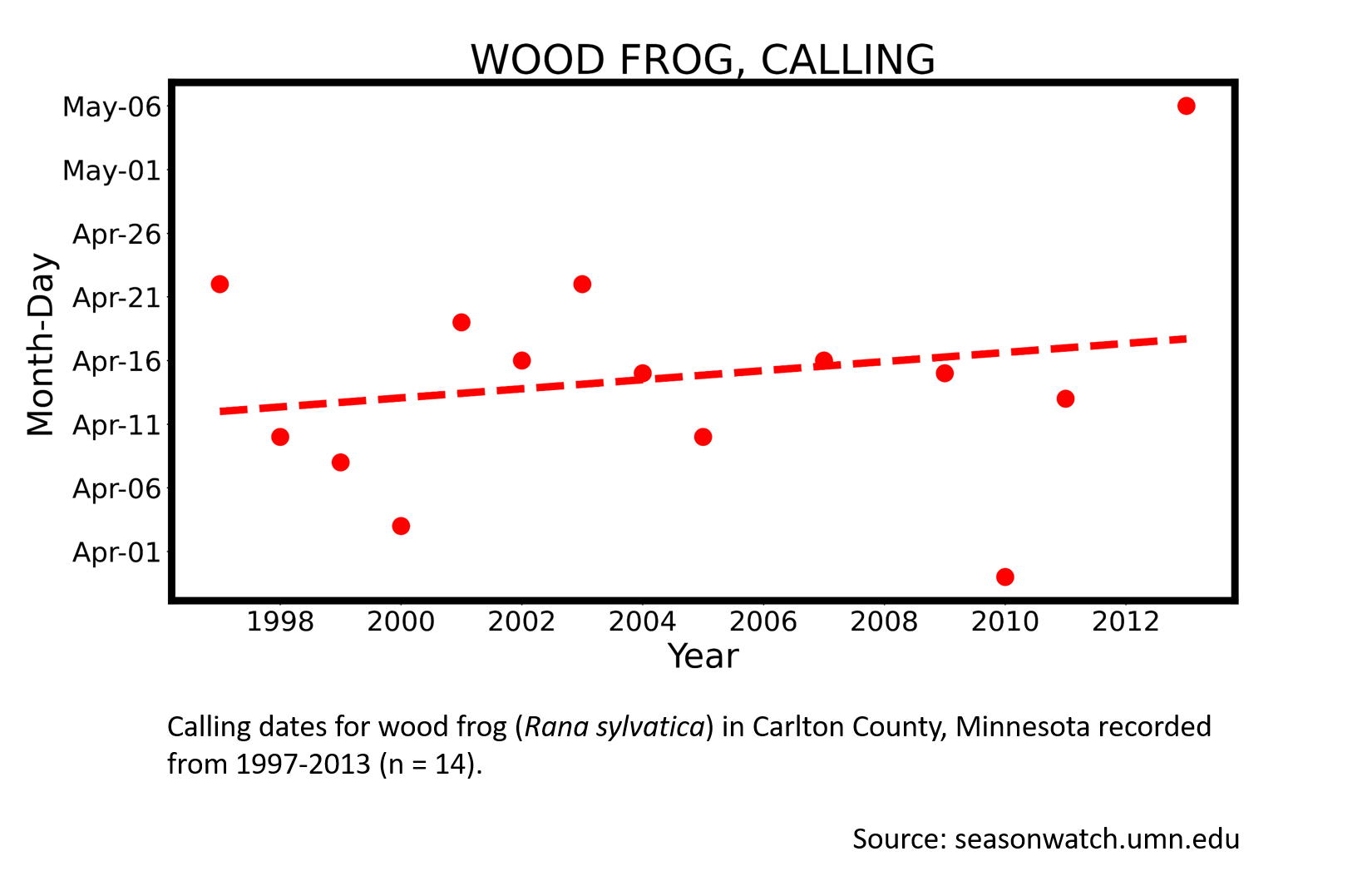
Eggs
- Earliest: April 4 (occurred in 2010)
- Average: April 23
- Latest: May 29 (occurred in 2012)
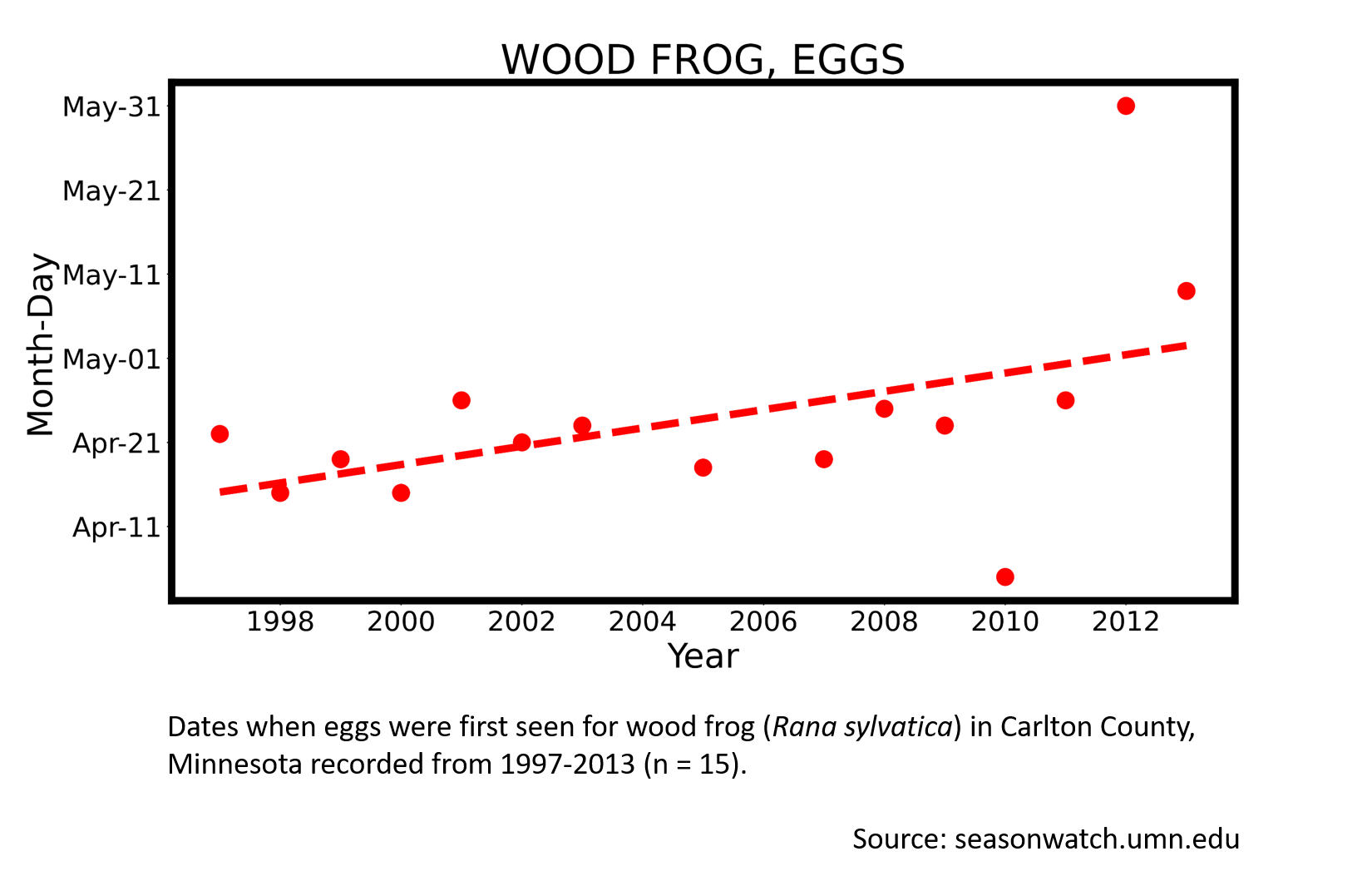
First heard
- Earliest: March 20 (occurred in 2012)
- Average: April 12
- Latest: May 4 (occurred in 2013)
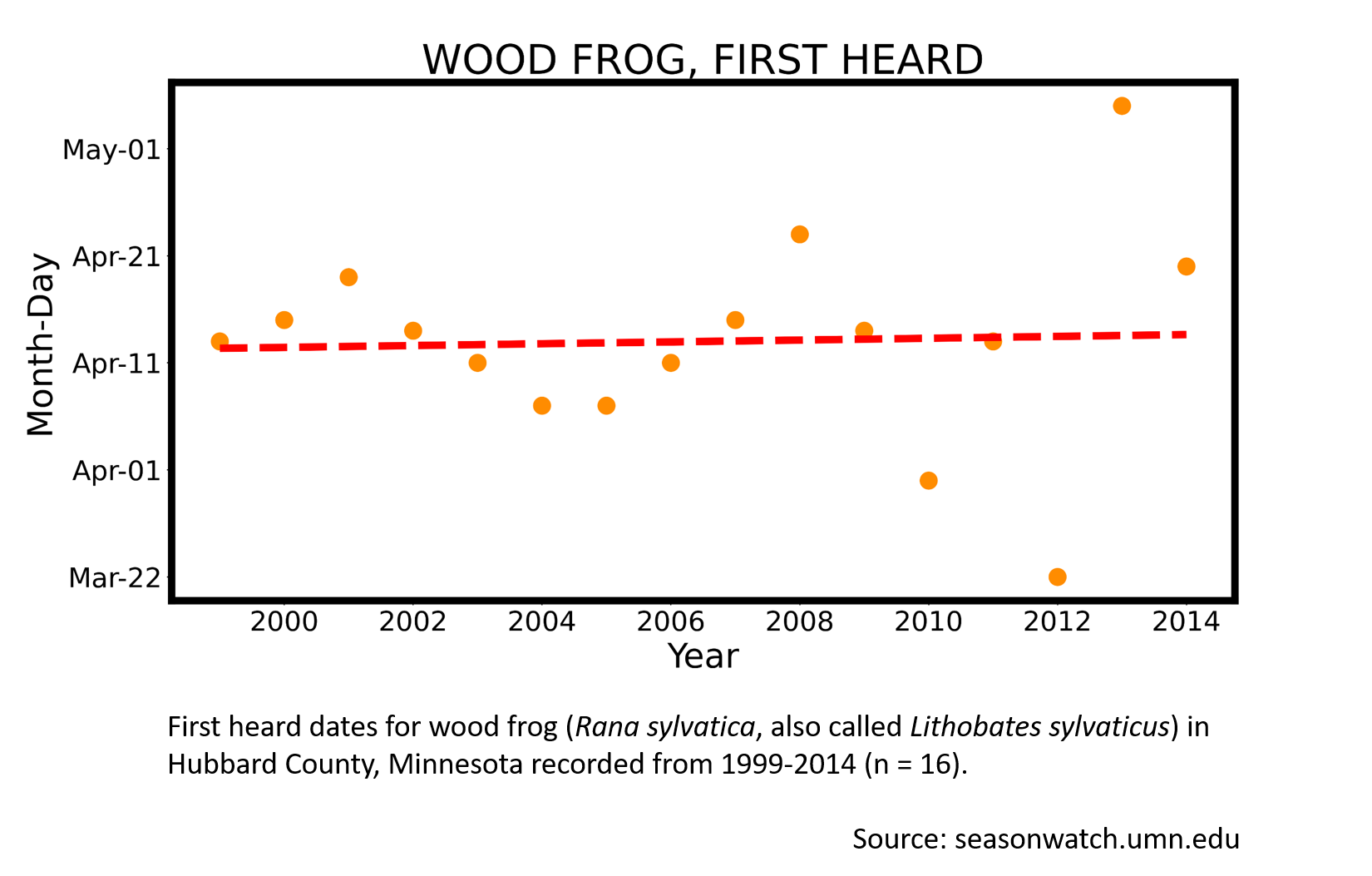
First heard
- Earliest: March 21 (occurred in 2012)
- Average: April 15
- Latest: May 6 (occurred in 2013)
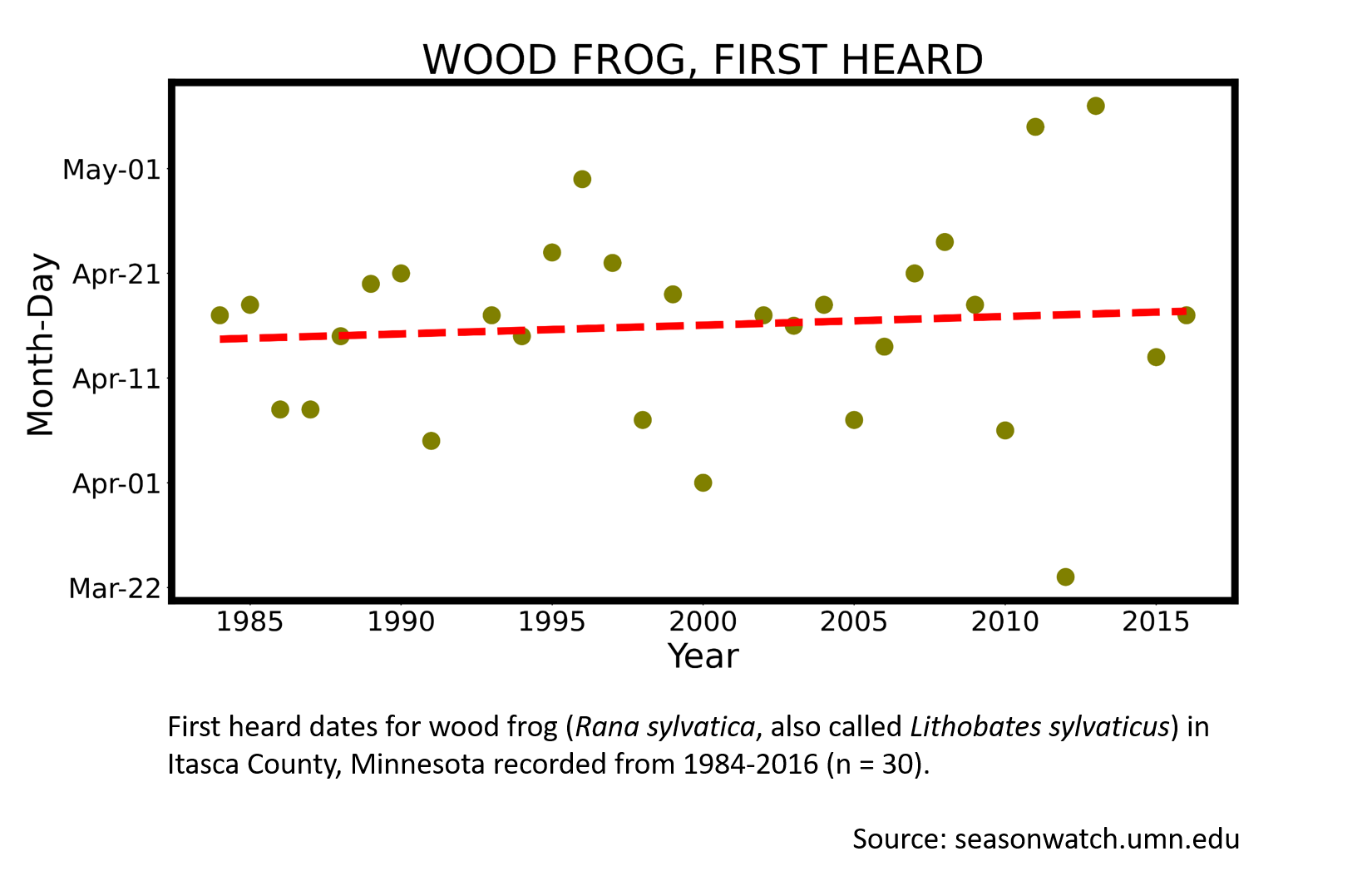
First heard
- Earliest: March 31 (occurred in 2010)
- Average: April 10
- Latest: April 19 (occurred in 2001)
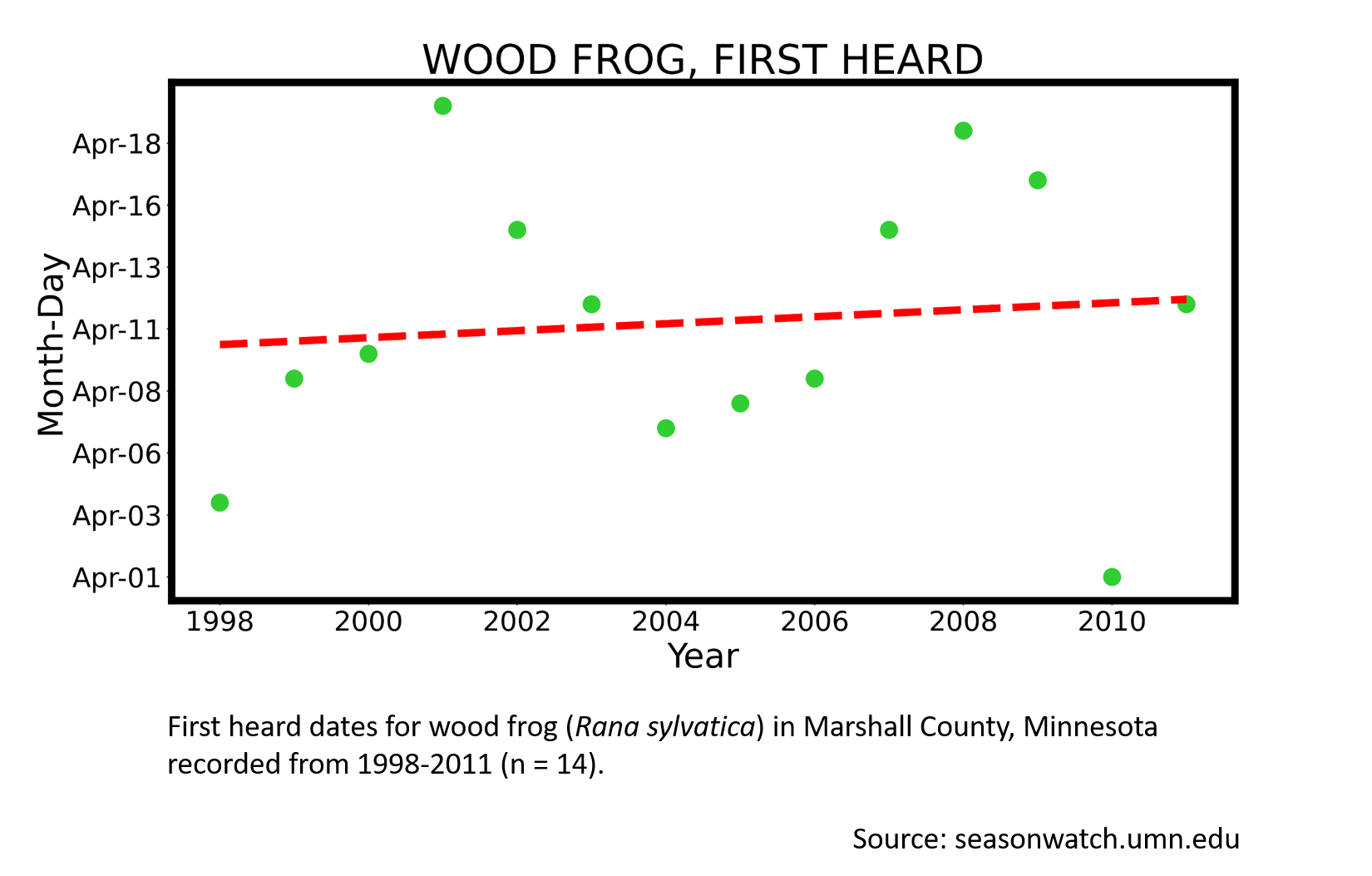
More resources
Keep exploring Season Watch
Keep exploring Season Watch
Co-author: Audrey Negro, Minnesota Master Naturalist
